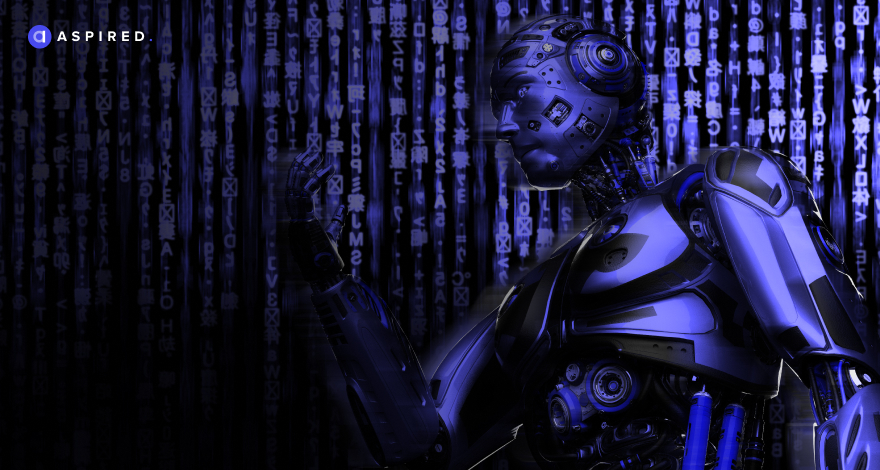Gone are the days when Artificial Intelligence was a what-if scenario, and tech gurus wouldn't stop explaining the endless possibilities it would create. The spearhead of the most potent AI models has arrived and has dominated the news industry since day one. Concerns have been voiced, however, about the possible hazards posed by AI's rapid development and how it affects our lives. Though the threat of AI taking over the world and replacing human capabilities may seem far-fetched, the reality is that AI can be dangerous, and it's time to seriously consider AI regulations before it's too late.
Understanding the Risks of AI
The potential risks associated with AI vary, ranging from job loss to cybersecurity threats and existential risks. On the one hand, AI systems face the threat of hacking and being used for malicious purposes, while on the other hand, this innovative technology could be the power source to create deep fakes and fake information.
To sum it up, here is a look at all the significant dangers associated with AI and where it is headed shortly.
Automation-spurred job loss: AI's impact on employment is a significant concern, leading to job displacement and income inequality. According to World Economic Forum, 85 million jobs will be displaced due to AI automation by 2025.
Privacy violations: AI's ability to process vast amounts of data significantly threatens privacy. The fact that AI-powered systems can quickly identify individuals, analyze their behavior, and predict their actions. It creates new challenges for developing and misusing information that could lead to severe privacy violations and create opportunities for cybercrime.
Deepfakes: The latest AI models like DALL-E and Midjourney AI can create more advanced deep fakes than ever. They can be used to defame individuals or spread misinformation and have more significant potential to fuel propaganda on the internet.
Algorithmic bias caused by bad data: AI systems are vulnerable to producing biased or inaccurate results when trained on biased or inaccurate data. This can perpetuate discrimination, inequality, and social injustice.
Weapons automatization: While this one might not be imminent, the development of AI-powered weapons could lead to an arms race between nations, posing significant risks to global stabilization and potentially causing harm to civilians.
Real-World Examples of AI Mishaps
The potential dangers of AI are not theoretical but have already occurred in real-life situations. Here are a few examples of AI mishaps that have made headlines.
- The Uber self-driving car accident in Arizona resulted in the death of a pedestrian. (Source) The self-driving car failed to identify the pedestrian, leading to the first known death caused by an autonomous vehicle.
- The Amazon AI recruiting tool perpetuated gender bias. The tool was designed to automate the hiring process, but it was found to favor male candidates over female candidates.
- The Microsoft Tay chatbot became racist and offensive after interacting with Twitter users. The chatbot was designed to learn from its interactions with people, but it quickly began to spout racist and offensive comments.
The use of AI algorithms in criminal sentencing perpetuates racial bias. Studies have found that AI algorithms used in criminal sentencing can be biased against people of color, resulting in longer prison sentences and perpetuating racial injustice.
AI Regulations Need of the Hour
Given the potential risks associated with AI, it's essential to regulate the technology to ensure it is used ethically and responsibly. However, one of the biggest challenges in regulating AI is the speed at which technology is advancing. As a result, traditional regulatory approaches may not be suitable, as regulations may become outdated before they are even implemented. Similarly, the absence of AI regulation frameworks, lack of transparency around AI systems, and similar other things pose hurdles on the road to AI regulations.
While regulating AI may be challenging, the benefits far outweigh the risks. Effective regulation ensures that AI is developed and used responsibly, with a focus on the ethical implications of the technology. This can help prevent harm to individuals and society and promote fairness and equality. Effective regulation can help build trust by ensuring that AI systems are developed and deployed ethically and transparently.
Ways To Mitigate Risks of Artificial Intelligence
As AI developments progress and we witness a race against the time of ever-surprising AI models, it is essential to take proactive steps to mitigate potential risks. Here are some ways to do it.
Develop National and International Regulations:
Governments and international organizations must work together to establish regulations that ensure AI is used safely and responsibly. Regulations need to be comprehensive, considering both AI's benefits and risks. The regulations should include provisions that encourage transparency, accountability, and oversight.
Create Organizational Standards for Applying AI:
Organizations that use AI should have clear guidelines and standards for its use. These standards should be transparent and include methods for monitoring and evaluating the effectiveness of AI applications. Organizations must also be held accountable for any negative consequences arising from using AI.
Make AI a Part of Company Culture and Discussions:
Companies should encourage discussion and debate about the ethical implications of AI. These discussions should involve all employees, from the top executives to the entry-level staff. A culture of ethical responsibility must be instilled in organizations that use AI to ensure that it is used in ways that benefit society.
Inform Tech with Humanities Perspectives:
AI developers must be informed by the perspectives of the humanities, including philosophy, sociology, and ethics. These perspectives provide a valuable counterbalance to the technical aspects of AI development, ensuring that the technology is developed in ways aligned with human values and ethics.
Conclusion
Artificial intelligence has the potential to revolutionize our world in numerous ways. It has already been a valuable tool in healthcare, education, and business. However, the potential risks associated with AI are too scary to be ignored. If AI regulations are made just in time, all future AI development will be done in a safe, responsible, and ethical way.

 Clients
Clients
 Processes
Processes
 Blog
Blog










